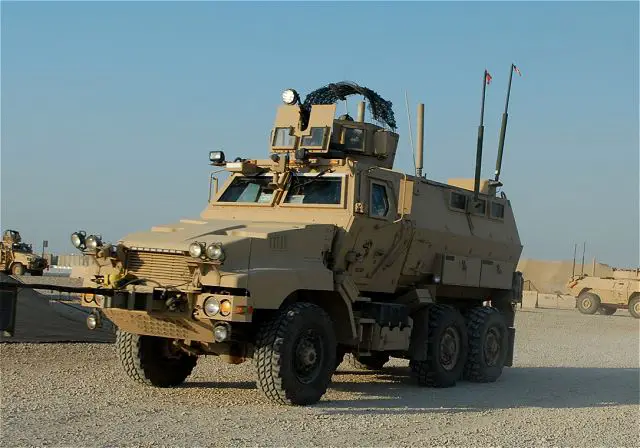Breaking news
New armor for U.S. Army Caiman armoured vehicle in Iraq against Iranian made bombs rockets 1707111.
| a | |||
Defense News - United States |
|||
|
|||
| New armor for U.S. Army Caiman armoured vehicle in Iraq against Iranian made bombs and rockets | |||
The
U.S. military has begun fitting new armor to its most heavily fortified
wheeled vehicles in Iraq because of improved bombs coming from Iran, the
Defense Department’s procurement chief said today. |
|||
| The Caiman variant of the Army’s mine resistant, ambush protected vehicles is getting new armor, said Ashton Carter at the Brookings Institution, a Washington study center. Caimans are built by BAE Systems Plc. The Pentagon is modifying the vehicle’s side armor “with EFP’s specifically in mind,” Carter said of Iranian-produced Explosively Formed Penetrators designed to destroy the most dense U.S. armor. “This is a very important effort so those vehicles are strengthened,” he said. “I am talking about armor plates on the side of the Caiman,” he said. The
Pentagon MRAP program office set an accelerated delivery schedule for
1,140 upgrade kits to be completed in the next few months, said spokeswoman
Cheryl Irwin. Forty kits so far have been shipped to Iraq for installation,
she said. Iran is supplying bigger EFPs and “improvised rocket- assisted munitions,” or IRAMs, he said. IRAMs are bombs capable of creating a more powerful explosion than a conventional mortar shell, he said. Iran is supplying bigger EFPs and “improvised rocket- assisted munitions,” or IRAMs, he said. IRAMs are bombs capable of creating a more powerful explosion than a conventional mortar shell, he said. One of the achievements Gates touted for his 4 1/2 years in office was forcing the Pentagon’s procurement system to focus on the wars in Iraq and Afghanistan, particularly in developing technology to better protect U.S. forces from roadside bombs. He pressed to speed purchases of the mine-resistant, ambush-protected vehicles, or MRAPs, in part to counter Iranian- made EFPs. He then bore down to get all-terrain versions of the vehicles, called MATVs, for Afghanistan’s rugged terrain. He also established a task force to find other ways of intercepting and countering the devices. |
|||




















